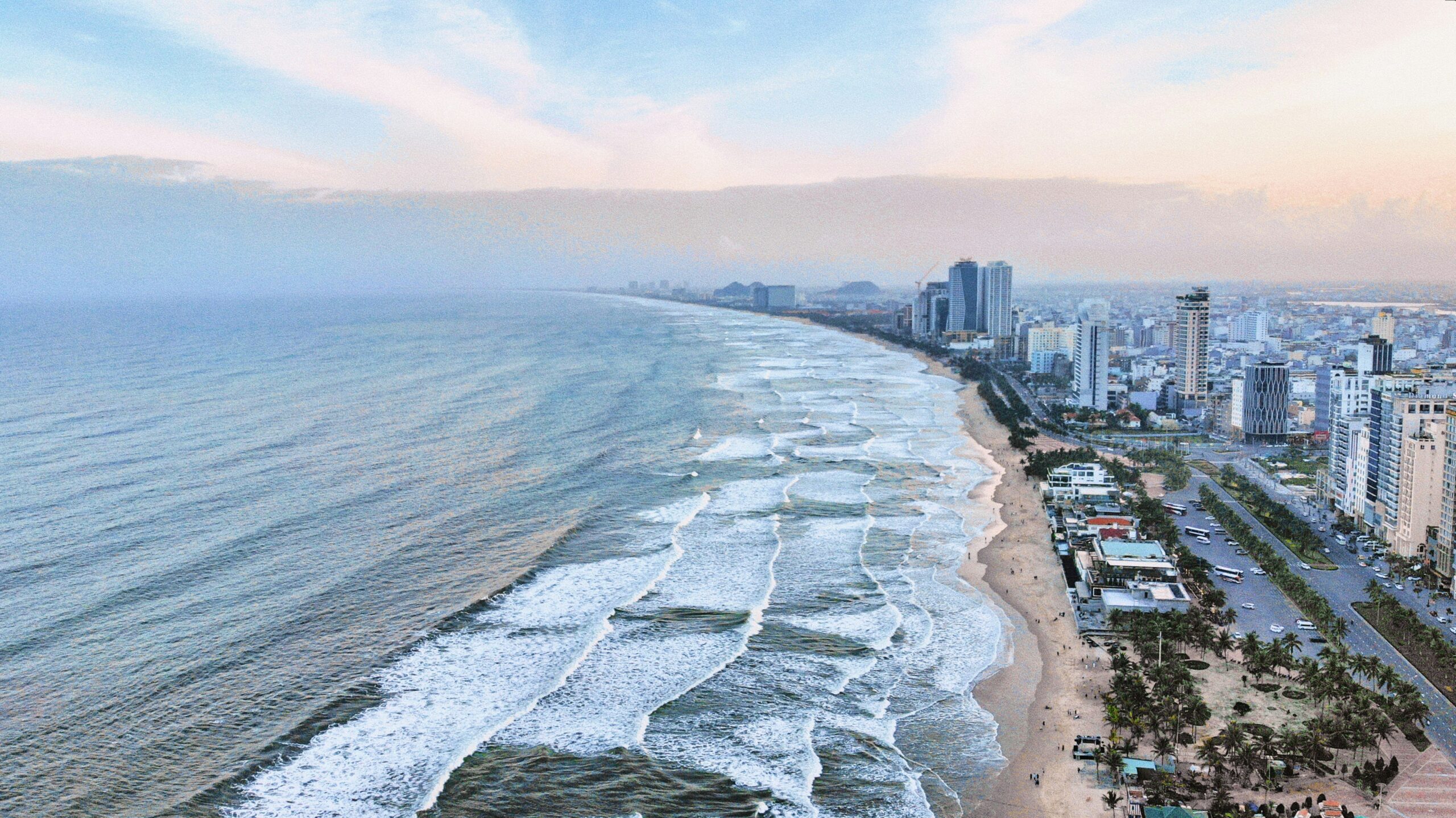Da Nang, Vietnam, is quietly transforming into one of Southeast Asia’s most desirable hubs for long-term residents and expatriates. If you are considering a move, this coastal city offers a rare blend of modern city infrastructure and relaxed, sun-drenched beach life, providing a perfect escape for remote workers, retirees, and those seeking a lifestyle change. Consequently, this unique combination is quickly attracting an international crowd, making the life of a Da Nang expat both comfortable and adventurous.

Table of Contents
- A Coastal City with the Best of Both Worlds
- Affordable Living Without Sacrificing Comfort
- Visa Options – How Long Can You Stay?
- Best Neighborhoods for Expats in Da Nang
- A Friendly and Growing Expat Community
- The Flip Side: Things to Be Prepared For
A Coastal City with the Best of Both Worlds
Da Nang strikes a rare balance: modern infrastructure meets laid-back beach living. You get gleaming bridges, reliable Wi-Fi, trendy cafés, and Western-style supermarkets, all just minutes from white-sand beaches like My Khe or Non Nuoc. Importantly, there aren’t many places where you can finish work at 4 PM and be paddle boarding by 4:15. This incredible proximity to the ocean dramatically improves work-life balance for residents.

Affordable Living Without Sacrificing Comfort
Compared to Bangkok, Bali, or Lisbon, Da Nang still sits in the “sweet spot” of affordability. Rent for a modern apartment or house near the beach is surprisingly reasonable, fresh seafood is dirt cheap, and scooters sip fuel like it’s holy water. One expat noted, “I was paying double for a smaller, less modern apartment in another major Asian city. The value here is unbeatable.” You can live comfortably on $1,200–$1,500 USD a month, although digital nomads on tighter budgets make it work for far less.

Cost Breakdown:
- Rent: A one-bedroom apartment near the beach ranges from $300–$500 USD per month.
- Utilities & Internet: High-speed internet is typically $10–$20 USD, while total utilities (electric, water, garbage) run $50–$80 USD.
- Food: Street food averages $1–$3 USD per meal. Consequently, monthly grocery costs usually fall around $200 USD.
- Transportation: Monthly motorbike rental is $40–$60 USD.
Best Neighborhoods for Expats in Da Nang
Your lifestyle will vary dramatically depending on where you live. This quick rundown highlights the most popular choices:
- My An / An Thuong (Expat Beach District): This area is the most popular for digital nomads and young expats. You will find it packed with cafés, coworking spaces, yoga studios, bars, and international restaurants. It’s also walking distance to My Khe Beach, aka your new backyard.
- Son Tra (Green & Quiet): This neighborhood is closer to nature with monkeys, mountains, and sea views. It proves great for those wanting space and tranquility while still being 10 minutes from the action. You will find lots of villas and modern apartments here.
- Hai Chau (City Center): Hai Chau is best for those who want local life, markets, and convenience. It features fewer foreigners and more Vietnamese charm. Expect to swap beach walks for busy streets and bánh mì stalls.
 A Friendly and Growing Expat Community
A Friendly and Growing Expat Community
Da Nang’s expat scene is big enough to be social but small enough to feel personal. The community is active and welcoming. Whether you’re into fitness groups, language exchanges, networking events, or beachfront barbecues, there’s something happening almost every night. Furthermore, locals tend to be warm, patient, and welcoming, making the cultural transition far smoother than in bigger Vietnamese cities like Hanoi or Saigon. Online communities such as “Expats in Da Nang City” and “Digital Nomads in Da Nang” on platforms like Meetup and Facebook also connect thousands of residents, ensuring a supportive network for newcomers.
The Flip Side: Things to Be Prepared For
No paradise is perfect, and Da Nang is no exception. Therefore, a little preparation helps manage expectations.
- Construction Noise: The city is growing fast, so expect cranes and drills as background music, especially in developing areas like My An.
- Slower Pace of Life: Bureaucracy often moves at glacial speed. Your delivery might arrive today… or next week. As one source suggests, “patience is a necessary virtue when dealing with administrative processes.”
- Cultural Differences: Traffic rules? More like suggestions. Customer service? Often charmingly chaotic.
Most expats agree: These quirks add character rather than frustration. They are simply part of the adventure.
Visa Options – How Long Can You Stay?
Visa / e-Visa Options
Vietnam offers a national e-Visa program via the official portal (evisa.gov.vn, as well as thithucdientu.gov.vn) which now supports citizens of all countries.
Duration & Entries: You can stay up to 90 days, and you may choose either single-entry or multiple-entry e-Visa options.
Fees: USD 25 for single-entry; USD 50 for multiple-entry.
Requirements: A valid passport (at least 6 months validity), a portrait photo, scan of passport data page, declared entry/exit points (from allowed list), and payment via the online gateway.
Entry / Exit Points: You must enter and depart via one of 42 approved international locations (airports, land, sea) which accept e-Visa holders. Visas
Validity: The e-Visa is valid only for the dates you specify and must not exceed 90 days. You can enter anytime within that validity window.
Non-Refundable & Processing: The visa fee is non-refundable. Many applications are processed in 3–5 working days, though in some cases it may take longer.
Limitations: The e-Visa is not intended for employment within Vietnam. Also, you must apply from outside the country (i.e. not while you’re already in Vietnam).
Extensions and Changes: If you want to stay longer than your allowed time or change visa status, you’ll need to apply via Vietnam’s Immigration Department (often through an agency or guarantor).
